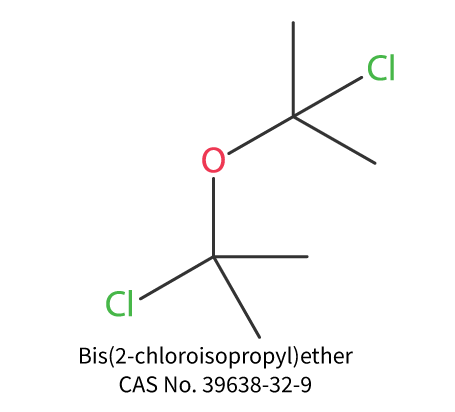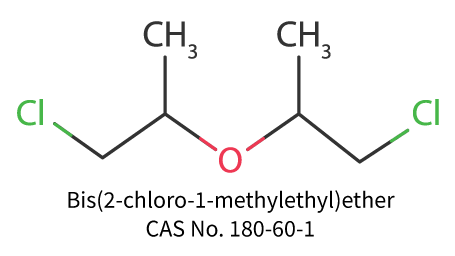Laboratory
Bis(2-chloro-1-methylethyl)ether not bis(2-chloroisopropyl)ether
Nov. 26 2020
In the United States Environmental Protection Agency (USEPA) SW846 Method 8270 version D [1] for the determination of semi-volatile organic compounds (SVOCs), a discrepancy was identified and corrected from earlier versions (and revisions) of this method. Specifically, the compound identified by CAS# 108-60-1 is bis(2-chloro-1-methylethyl)ether not bis(2-chloroisopropyl)ether (CAS# 39638-32-9). It is further clarified in USEPA Method 8270, starting with revision 5 of “D” version and onward, that the correct and intended compound measured by this method is bis(2-chloro-1-methylethyl)ether.
These compounds are structural isomers. This means they are similar but still structurally different. From an analytical and more importantly, from a regulatory standpoint, the compound names are not interchangeable and a clear differentiation must be made.
Several federal and provincial regulations, including : the CCME Guidance Manual for Environmental Site Characterization [2]; in Ontario, regulation 153/04 [3], the associated Analytical Protocols Document [4] and the MISA Protocols for Sampling and Analysis [5]; and in Quebec, regulations respecting burial of contaminated soils [6]) include soil and water criteria for bis(2-chloro-1-methylethyl)ether, but have listed the compound as “bis(2-chloroisopropyl)ether” based on the parameter listed in earlier versions of USEPA Method 8270.
While this discrepancy was addressed by the USEPA in the most current version of Method 8270 this update has not yet been reflected in the federal and provincial regulations mentioned earlier.
The table below provides a summary of the references to this parameter in the Ontario regulatory documents.
* The Quebec regulations list surface water quality criteria for the correct compound name, bis(2-chloro-1-methylethyl)ether, with its correct CAS#, listing parameter synonym as bis(2-chloroisopropyl)ether.
The confusion on which compound is the intended target parameter has been propagated by the manufacturers and suppliers of laboratory standards who use the two compound names interchangeably but with reference to CAS# 108-60-1.
Bureau Veritas’ Consulting Scientists, working with the Ontario Ministry of Environment Conservation and Parks (MECP), have clarified and confirmed: the correct compound that should be analyzed and reported in support of Ontario regulations is bis(2-chloro-1-methylethyl)ether (CAS# 108-60-1). In addition, the Ontario MOECP Laboratory Services Branch has proposed several amendments to the O. Reg. 153/04 Analytical Protocol, including the correction of the compound name and CAS# as specified above. This amendment has been posted to the Environmental Registry of Ontario on October 6, 2020 under ERO number 019-2462.
References
[1] United States EPA Method 8270D: “Semivolatile Organic Compounds by Gas Chromatography/Mass Spectrometry” SW846 Update V (Rev. 5) July, 2014
[2] Canadian Council of Ministers of the Environment: “Guidance Manual for Environmental Site Characterization in Support of Environmental and Human Health Risk Assessment; Volume 4 – Analytical Methods” (ISBN 978-1—77202-032-8) 2016
[3] Ontario Regulation 153/04: “Records of Site Condition – Part XV.1 of the Act under the Environmental Protection Act” (as amended July 1, 2020)
[4] Ontario MOE LSB: “Protocol for Analytical Methods Used in the Assessment of Properties under Part XV.1 of the Environmental Protection Act” March 2004 (amended July 1, 2011)
[5] Ontario MOECC: “Protocol for the Sampling and Analysis of Industrial/Municipal Wastewater” (Version: 2.0) January 1, 2016
[6] Quebec Environmental Quality Act, Q-2, r. 18 – Regulation respecting the burial of contaminated soils.

